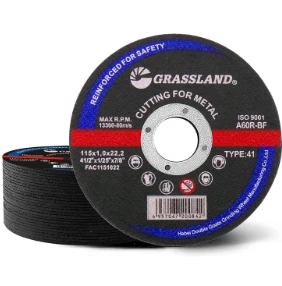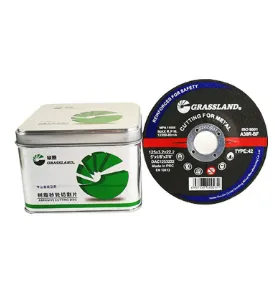

Engaging with cutting discs also demands an understanding of their wear patterns. Professionals in the field know that consistent disc inspection can preemptively identify wear and tear, thus maintaining performance and safety standards. Discs that show signs of severe wear, uneven wear patterns, or edge chipping should be immediately replaced to avoid compromised cutting quality or hazardous situations. As an experienced craftsman, I advocate for regular maintenance and proper storage of cutting discs. Exposure to moisture or adverse environmental conditions can degrade disc materials, impacting their effectiveness and safety. Thus, storing them in a dry, temperate place ensures longevity and reliability. Ensuring trustworthiness in product selection means relying on reputable brands that offer a verified track record of quality and safety. Many industry-leading manufacturers provide customer support, detailed product specifications, and even training resources to help users maximize their discs' potential. These resources can be invaluable in projects that require cutting precision and efficiency. In conclusion, gaining expertise with cutting discs for metal entails understanding their composition, selecting the right dimensions and speed ratings, and maintaining proper usage and storage. By prioritizing these elements, you can ensure that your metalworking projects are executed to a high standard of quality and safety. As a trusted expert in metalworking, I assure you that investing time in learning these insights will enhance your crafting capabilities and project outcomes.
Post time:Feb - 03 - 2025

















